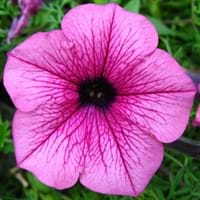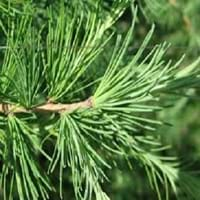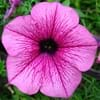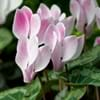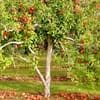Life Span
Annual
Perennial
Type
Flowering Plants, Shrubs
Needled or Scaled Evergreen
Origin
South America
Eastern Europe, Northern Europe, Russia/Siberia, Central Asia, Nepal, China
Types
Grandiflora Petunias, Multiflora Petunias, Wave Petunias, Superbell Petunias, Supertunia Petunias
not available
Number of Varieties
Not Available
Habitat
Terrestrial
Cold Regions
USDA Hardiness Zone
9-10
1-5
AHS Heat Zone
Not Available
5-1
Sunset Zone
not provided
A1, A2, A3, 1a, 1b, 2a, 2b
Habit
Not Available
Upright/Erect
Flower Color
Blue, Pink, Purple, Red, White, Yellow
Green, Red, Yellow
Flower Color Modifier
Not Available
Bicolor
Fruit Color
Not Available
Brown, Yellow
Leaf Color in Spring
Golden Green
Light Green
Leaf Color in Summer
Green
Light Green
Leaf Color in Fall
Green
Yellow
Leaf Color in Winter
Green
Not Available
Leaf Shape
Ovate
Needle like
Plant Season
Summer
Spring, Summer, Fall
Sunlight
Full Sun, Partial shade
Full Sun, Partial Sun
Type of Soil
Loamy, Sandy
Clay, Loam, Sand
The pH of Soil
Neutral
Acidic, Neutral, Alkaline
Soil Drainage
Well drained
Average
Bloom Time
Fall, Spring, Summer
Not Available
Tolerances
Pollution
Drought
Where to Plant?
Container, Ground, Pot
Ground
How to Plant?
Seedlings, Transplanting
Seedlings
Plant Maintenance
Medium
Medium
Watering Requirements
Keep the ground moist but not water-logged, Requires regular watering, Requires watering in the growing season
Keep the Soil well drained
In Summer
Lots of watering
Lots of watering
In Spring
Moderate
Moderate
In Winter
Average Water
Average Water
Soil pH
Neutral
Acidic, Neutral, Alkaline
Soil Type
Loamy, Sandy
Clay, Loam, Sand
Soil Drainage Capacity
Well drained
Average
Sun Exposure
Full Sun, Partial shade
Full Sun, Partial Sun
Pruning
Cut or pinch the stems, Do not prune during shooting season, Remove dead or diseased plant parts, Remove deadheads
Prune to control growth, Remove damaged leaves, Remove dead branches, Remove dead leaves
Fertilizers
All-Purpose Liquid Fertilizer
All-Purpose Liquid Fertilizer
Pests and Diseases
Aphids, Bacterial Blight, Caterpillars, Gray mold, Leaf spot, Powdery mildew, Root rot, Spider mites, Thripes, Verticillium Wilt, Viruses
Armillaria root rot, larch sawfly, Needle rust
Plant Tolerance
Drought
Dry Conditions
Flowers
Yes
Insignificant
Flower Petal Number
Not Available
Single
Fragrant Bark/Stem
Yes
No
Foliage Texture
Medium
Fine
Foliage Sheen
Matte
Matte
Attracts
Butterflies, Hummingbirds
Rodents
Allergy
Not Available
Unknown
Aesthetic Uses
Beautification, Bouquets, Showy Purposes
Landscape Designing, Showy Purposes, Woodland margins
Beauty Benefits
Not Available
Not Available
Environmental Uses
Air purification
Air purification
Medicinal Uses
Not Available
Unknown
Part of Plant Used
Flowers
Not Available
Other Uses
Showy Purposes
Application in Furniture
Used As Indoor Plant
Yes
No
Used As Outdoor Plant
Yes
Yes
Garden Design
Bedding Plant, Container, Edging
Feature Plant
Botanical Name
Petunia
LARIX sibirica
Common Name
Petunia
Siberian Larch
In Hindi
Petunia
Siberian Larch
In German
Petunie
Sibirische Lärche
In French
Pétunia
Mélèze de Sibérie
In Spanish
Petunia
Larix sibirica
In Greek
πετούνια
siberian larch
In Portuguese
Petúnia
siberian larch
In Polish
Petunia
Modrzew syberyjski
In Latin
Petunia
Siberian larch
Phylum
Streptophyta
Pinophyta
Class
Magnoliopsida
Pinopsida
Family
Solanaceae
Pinaceae
Clade
Angiosperms, Asterids, Eudicots
Not Available
Tribe
Not Available
Not Available
Subfamily
Petunioideae
Not Applicable
Number of Species
Not Available
Difference Between Petunia and Siberian Larch
If you are confused whether Petunia or Siberian Larch are same, here are some features about those plants to help you choose better. Many people think that these two plants have the same characteristics, but one can see Petunia and Siberian Larch Information and learn more about it. Fertilizers required for proper growth of Petunia are All-Purpose Liquid Fertilizer, whereas for Siberian Larch fertilizers required are All-Purpose Liquid Fertilizer. Hence, one should know the basic difference between Petunia and Siberian Larch if you are planning to have them in your garden to enhance its beauty.
<
Flowering PlantsImportance of Petunia and Siberian Larch
Want to have the most appropriate plant for your garden? You might want to know the importance of Petunia and Siberian Larch. Basically, these two plants vary in many aspects. Compare Petunia and Siberian Larch as they differ in many characteristics such as their life, care, benefits, facts, etc. Every gardener must at least have the slightest clue about the plants he wants to plant in his garden. Compare their benefits, which differ in many ways like facts and uses. The medicinal use of Petunia is Not Available whereas of Siberian Larch is Unknown. Petunia has beauty benefits as follows: Not Available while Siberian Larch has beauty benefits as follows: Not Available.
Compare Facts of Petunia vs Siberian Larch
How to choose the best garden plant for your garden depending upon its facts? Here garden plant comparison will help you to solve this query. Compare the facts of Petunia vs Siberian Larch and know which one to choose. As garden plants have benefits and other uses, allergy is also a major drawback of plants for some people. Allergic reactions of Petunia are Not Available whereas of Siberian Larch have Unknown respectively. Having a fruit bearing plant in your garden can be a plus point of your garden. Petunia has no showy fruits and Siberian Larch has showy fruits. Also Petunia is flowering and Siberian Larch is not flowering . You can compare Petunia and Siberian Larch facts and facts of other plants too.
